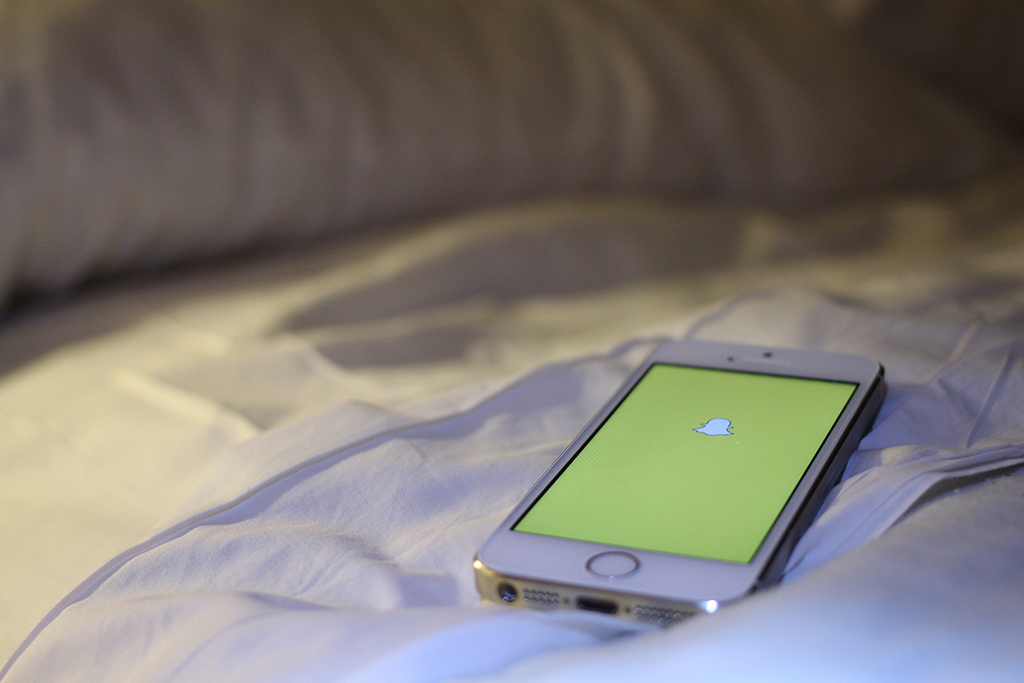"No parents" acts as an incentive for young people to opt for Snapchat
A sex video recorded in a high school in Florida was distributed through Snapchat, Kim Kardashian posted a "snap" of her pregnancy test and a number of the US presidential candidates have been using this application as a campaign tool. Not the first or last case of an action beginning and ending on Snapchat. Ten billion videos are viewed on this application every single day. Snapchat is now the preferred social media network among teenagers over and above Facebook or Instagram, while it still represents the great unknown for the majority of adults. The reasons: "It is hard to access, not very user-friendly, is quite different in terms of the way it functions and adults find it confusing", explains Mireia Montaña, professor of Communication at the UOC. That means that, as the expert points out, with Snapchat "parents have a harder time keeping track of what their children are doing", while, for the children, "the lack of parental presence on the application acts as an additional incentive for using it".
"This application allows them to separate themselves from those who are not part of their generation", says Montaña. "Many teenagers feel that they are being monitored when they accept their parents as 'friends' on Facebook, whereas on Snapchat they feel freer to be themselves", she adds. This decline in use is backed up by the statistics: 80% of young people aged 12 to 24 were using Facebook in 2014 but that number is down to 68% in 2016. According to research carried out by the Global Web Index, 45% of these young Internet users confirm they are bored with Facebook, saying that the site is not as "cool" as it was before. In the same period, Snapchat has become positioned as the preferred social media network by 72% of teenagers.
The limited duration of the information on Snapchat is seen as a problem among adults but, for young people, it is "an incentive to view more risqué content", says UOC professor on the Master's Degree in Social Media Management, Sílvia Martínez. Martínez adds that "they feel protected by the transience of the content and this creates a false sense of security", a factor which, the experts concur, prompts many young people to end up sharing content of a sexual or sensual nature. The content is posted via snaps or stories, the former "are deleted after being viewed or expire once the time limit decided by the user has expired" and the latter "form part of the user's profile but have a maximum duration of 24 hours". There is, however, the option to capture screenshots, another of the social media network's dangers that has already resulted in cases of blackmail occurring through the site due to "sexting".
What is my son or daughter up to on Snapchat?
Trying to control what goes on through Snapchat is no easy feat. Firstly, because parents "need to know what aliases their children are using to find them, and then because, unlike other social media networks, content disappears without a trace," explains Montaña.
Teens like "the multitude of online services the application offers, the centrality of images over text, the agility and temporary nature of the content, the effects, illustrations, texts and animations included in the images", attributes which, according to Martínez, make this application a communication space where young people feel comfortable. "Nowadays, photography and video are core elements of interaction and this type of functionality is now being included by both the media and other social media networks". For the media, "the 'Discover' function allows video, text and photo content to be shown"; a number of media sources of the stature of BBC and National Geographic already have a presence there.
The data speaks for itself: in just over a year, Snapchat has doubled its user base, ten billion videos are viewed daily, four hundred million images are sent and users spend between twenty-five to thirty minutes on the application per day. According to a study by the University of Michigan, the functionality of Snapchat, its spontaneity of interaction, generates a feeling of happiness among users, unlike the less positive feelings produced, for example, by Facebook. Snapchat currently boasts one hundred and ten million users, and has become the preferred social media network for 72% of young people, well above Facebook, Instagram and WhatsApp.
If young people are there, so are the brands
Snapchat provides brands with a channel to access the Millennials, an audience that does not watch television. There are now numerous big brands exploiting the characteristics of this application to implement "a non-intrusive, organic communication programme, thus producing content that is more appealing to Millennials", says Montaña.
The user is constantly interacting with "sponsored content via geofilters and sponsored selfies, namely, filters featuring animations related to user geolocation (if, for example, you are at a Starbucks, you will be shown coffee mugs, or if you are in a McDonald's, the filters feature chips, etc.). Such resources allow for "the pinpointing of where users meet friends and what activities they enjoy, while exposing them to and creating highly personalized advertising that generates commitment with the user". In conclusion, the experts therefore see Snapchat as representing "a revolution and paradigm shift with regard to mobile marketing".
Experts UOC
Press contact
-
Editorial department
